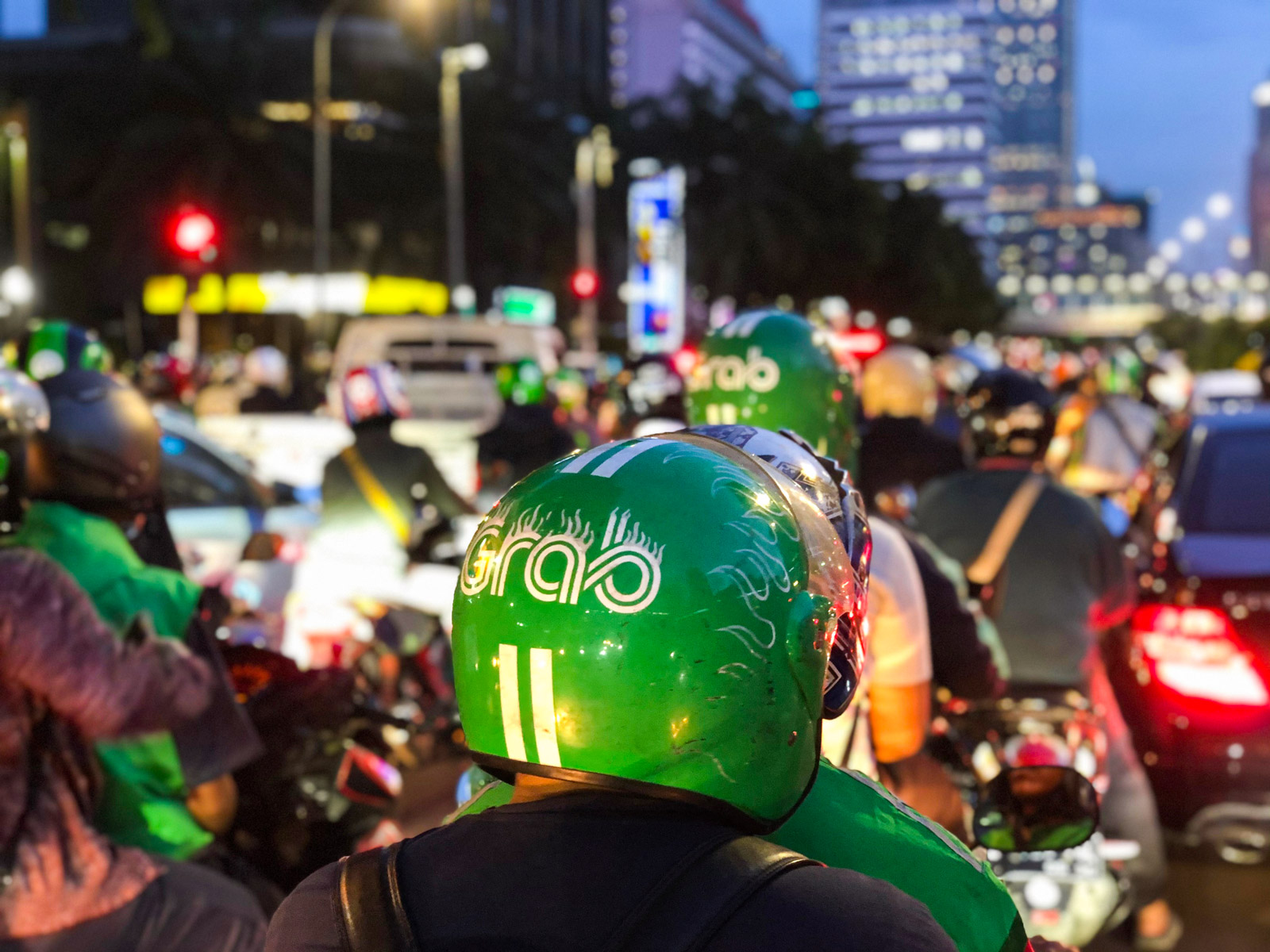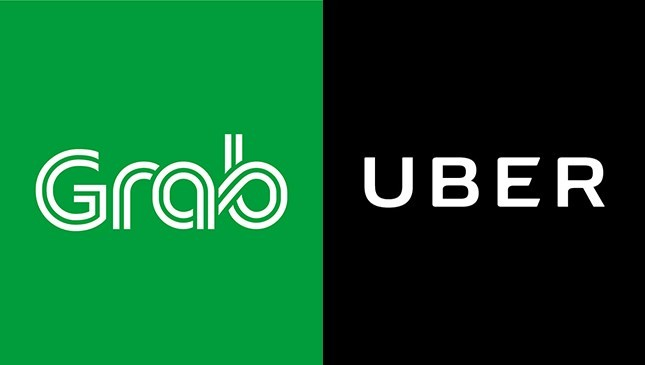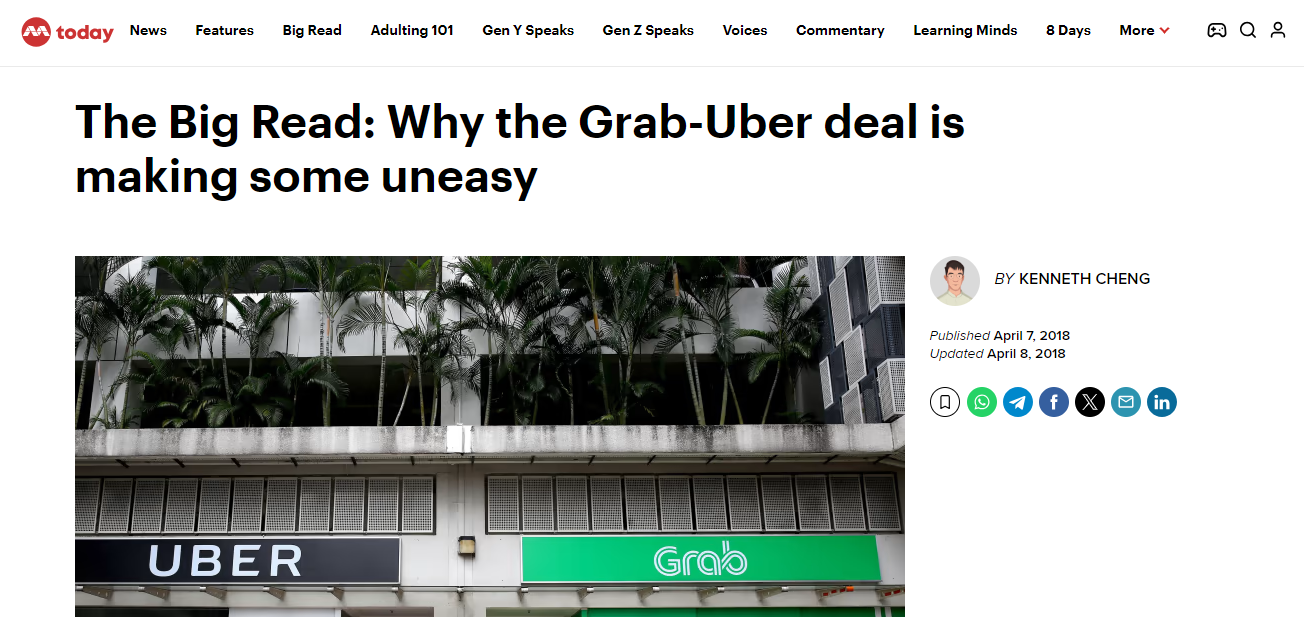Grab, the ride-hailing giant of Southeast Asia, has had an incredible journey from its humble beginnings as MyTeksi in Malaysia to becoming a publicly traded company on NASDAQ. This article takes you through the key milestones and pivotal moments that led to Grab's initial public offering (IPO), providing a detailed timeline of events and insights into its financial performance, strategic mergers, and market expectations.
Key Takeaways
- Grab started as MyTeksi in Malaysia before expanding across Southeast Asia.
- The company announced its plans to go public through a SPAC merger with Altimeter Growth Corp in April 2021.
- Grab faced several regulatory challenges and had to navigate complex financial obligations, including a significant payout to Uber.
- The COVID-19 pandemic impacted Grab's core ride-hailing business but boosted its delivery services.
- Grab's IPO on NASDAQ marked one of the largest SPAC mergers ever, valuing the company at nearly USD 40 billion.
The Genesis of Grab: From MyTeksi to Regional Giant

Grab was founded in June 2012 by Anthony Tan and Tan Hooi Ling in Kuala Lumpur, Malaysia. Initially named MyTeksi, the company aimed to make taxi rides safer and more reliable in Malaysia. By 2013, it rebranded as GrabTaxi and began expanding its services.
Grab quickly realised that many Southeast Asian countries faced similar transportation issues. This led to rapid expansion beyond Malaysia. The company entered markets like Singapore, Indonesia, and Thailand, offering not just ride-hailing but also food and parcel delivery services.
To strengthen its position, Grab made several strategic acquisitions and partnerships. These moves helped the company diversify its services and improve its technological capabilities. For instance, Grab's partnership with financial institutions enabled it to offer new services like insurance for drivers.
The Road to IPO: Key Milestones
Grab's journey to becoming a public company began with initial public announcements that sparked interest across the financial world. The company aimed to tap into the same investor enthusiasm that had propelled other tech debuts earlier in the year.
A significant milestone was the SPAC merger with Altimeter Growth Corp. This strategic move was designed to facilitate Grab's entry into the public markets. The merger was a crucial step in Grab's plan to become a publicly traded company.
Navigating the regulatory landscape was no small feat. Grab faced numerous regulatory approvals and challenges that tested its resolve. Despite these hurdles, the company remained focused on its goal of going public.
Investors are waiting for Grab’s IPO with high hopes. After the lockup period, they have the opportunity to get some divestment and general returns so that everybody will make decent money.
The road to Grab's IPO was marked by several key milestones, each bringing the company closer to its goal of becoming a publicly traded entity.
Financial Performance Leading Up to the IPO

Grab's financial results for the first quarter of 2021 were closely watched by investors. The company reported a loss of $0.01 per share, which was a significant improvement from previous quarters. This change represented a year-over-year improvement of +66.7%. Despite the loss, the results were seen as a positive sign of the company's potential for future profitability.
Impact of the Pandemic on Revenue
The COVID-19 pandemic had a mixed impact on Grab's revenue. While the demand for ride-hailing services dropped due to lockdowns and travel restrictions, other segments like food delivery saw a surge. This shift in consumer behaviour helped offset some of the losses in the ride-hailing sector. Grab's CFO, Peter Oey, mentioned that the revenue figures were "more on the conservative end," indicating cautious optimism about future growth.
Profitability Projections
Looking ahead, Grab has set ambitious targets for profitability. The company aims to break even in the next few years, driven by its diversified business model and strategic investments. However, the road to profitability is fraught with challenges, including regulatory hurdles and market competition. Investors are keenly watching how Grab navigates these obstacles to achieve its financial goals.
The SPAC Merger

Grab Holdings, Southeast Asia’s most valuable technology unicorn, announced its plan to go public by merging with a special purpose acquisition company (SPAC), Altimeter Growth Corp. This merger, revealed on April 13, is considered the world’s largest SPAC merger to date. The deal values Grab at nearly USD 40 billion, making it the biggest-ever listing by a Southeast Asian technology company.
Valuation and Market Reactions
The merger places a valuation of USD 39.6 billion on Grab, making it the second-largest deal involving a SPAC. This valuation has sparked significant interest and reactions in the market. Investors are keenly watching how this valuation will impact Grab's future growth and market position.
Implications for Stakeholders
The merger has several implications for stakeholders, including investors, employees, and customers. For investors, the high valuation and public listing offer potential for significant returns. Employees may see changes in company structure and operations, while customers could benefit from enhanced services and innovations.
The merger with Altimeter Growth Corp marks a significant milestone in Grab's journey, reflecting its growth and potential in the Southeast Asian market.
Uber and Grab: A Strategic Relationship

In 2018, Grab acquired Uber's Southeast Asia operations, marking a significant turning point in the region's ride-hailing industry. This acquisition allowed Grab to expand its market presence and integrate Uber's assets, including UberEats, into its platform. Despite Uber's early entry into the market in 2013, it struggled due to its Western-centric business model, which didn't align well with local needs.
Shareholding and Financial Obligations
As part of the acquisition deal, Uber received a 27.5% stake in Grab and a seat on the board. This strategic move not only provided Uber with a substantial share in Grab's future success but also aligned the interests of both companies. The merger also facilitated Grab's expansion into new services like food delivery and eScooter rentals.
Impact on Grab's Market Position
The merger significantly boosted Grab's market position, giving it an edge over competitors like Gojek. By acquiring Uber's operations, Grab could consolidate its resources and focus on enhancing its services across Southeast Asia. This move also helped Grab tap into new revenue streams and reinforce its market presence.
The merger between Grab and Uber's Southeast Asia operations was a game-changer, allowing Grab to dominate the ride-hailing, food delivery, and digital payment sectors in the region.
Investor Sentiment and Market Expectations
Investors are eagerly awaiting Grab's IPO with high hopes. After the lockup period, they have the opportunity to get some divestment and general returns, which could mean decent money for everyone involved.
Altimeter's big reputation can also be a factor to attract the attention of public stock investors. Altimeter not only contributed more than 10% of Grab’s private investment in public equity arrangement (PIPE) but also tied its shares down to a three-year lock-up period. Investors are likely to interpret this as a show of confidence in the long-term valuation of Grab, and this bodes well for investors’ trust in Grab.
Market Speculations and Predictions
When it comes to public markets, investors are not as patient as those in the private markets. They don’t have a long-term outlook, such as VC investors do. Naturally, they may think the valuation is hefty, overpriced with weak economics, and pressure the stock to go below the IPO price. We saw how Sea Group hovered below its IPO price for five quarters before they became one of the best-performing stocks of 2020.
Comparisons with Other Tech IPOs
This is similar to China 15 years ago when Sina.com went public. It was one of the first tech IPOs that led to many more opportunities. Other companies started heading to the stock market and more investors put money in China. Chua Kee Lock added that in the next four to five years, more global investors will put their core interest in Southeast Asia.
Technological Innovations and Service Diversification

Development of the Super App
Starting as a ride-hailing service, Grab has now expanded its operations into various business verticals, establishing itself as an on-demand super app. This transformation allows users to access multiple services, such as food delivery, digital payments, and even financial services, all within a single platform. The integration of these services has made Grab an essential part of daily life for many in Southeast Asia.
Expansion into Financial Services
Grab's venture into financial services includes offerings like GrabPay, a digital wallet, and GrabFinance, which provides loans and insurance products. These services aim to cater to the unbanked and underbanked populations in the region, providing them with accessible financial solutions. By leveraging its extensive user base, Grab has been able to quickly scale these services, making a significant impact on financial inclusion.
Adapting to Market Needs
Grab continuously adapts to market needs by introducing new features and services. For instance, during the COVID-19 pandemic, Grab launched GrabMart for grocery deliveries and GrabAssistant for personal shopping services. These innovations not only addressed immediate market demands but also showcased Grab's ability to pivot and respond to changing circumstances.
Grab's ability to innovate and diversify its services has been a key factor in its success, allowing it to stay ahead of competitors and meet the evolving needs of its users.
Challenges and Controversies

Platforms like Grab and Uber quickly caught governments’ attention. Grab’s representatives were summoned in different countries by parliamentarians and grilled by conservative politicians who intended to maintain local stakeholders’ status quo. However, this didn’t stop Grab and their competitors from finally gaining approval from local lawmakers.
Operational Challenges
Disputes have occurred between Grab drivers and local taxi operators as taxi drivers complained about a decline in their passenger numbers and income since Grab (and its competitor Uber) began to gain foothold in their areas. Until December 2016, around 65 assault cases towards GrabBike drivers by local taxibike drivers have been reported in Ho Chi Minh City, Vietnam. Much violence has erupted between Grab drivers and motorbike taxis in two major cities of Hanoi and Ho Chi Minh City in Vietnam.
Public Perception and Criticism
Cases of Grab drivers harassing their customers and the #MeToo movement in the United States and other countries have also recently emboldened women in Indonesia to speak out against harassment by Grab drivers, such as when a driver asks for personal information or sends them unsolicited messages after a trip.
Grab's Public Debut on NASDAQ
Grab made its official debut on NASDAQ in December 2021, marking a significant milestone for the company. This event followed a merger with Altimeter Growth Corp, a special purpose acquisition company (SPAC). The merger, announced in April 2021, was valued at nearly USD 40 billion, making it the largest SPAC merger to date. The listing day was filled with excitement and anticipation as investors and stakeholders watched closely.
Initial Stock Performance
On its first day of trading, Grab's stock experienced a volatile performance. The shares opened at a promising price but faced fluctuations throughout the day. By the end of the trading session, the stock had seen a notable drop, reflecting the market's mixed reactions. Despite the initial dip, many analysts remained optimistic about Grab's long-term potential, citing its strong market presence and diverse service offerings.
Future Outlook Post-IPO
Looking ahead, Grab has outlined several strategies to ensure sustained growth and profitability. The company plans to expand its services, including GrabFood, GrabPay, and GrabGifts, across more regions in Southeast Asia. Additionally, Grab aims to enhance its technological infrastructure to better serve its customers. The post-IPO period is expected to be crucial for Grab as it navigates the challenges and opportunities of being a publicly traded company.
The Future of Grab: Post-IPO Strategies
Growth Plans and Market Expansion
Grab aims to expand its footprint across Southeast Asia and beyond. The company plans to enter new markets and strengthen its presence in existing ones. This includes enhancing its ride-hailing services and growing its food delivery and digital payment sectors. By focusing on these areas, Grab hopes to capture a larger share of the market and increase its revenue streams.
Sustainability and Corporate Responsibility
Grab is committed to sustainability and corporate responsibility. The company is investing in eco-friendly technologies and practises to reduce its carbon footprint. Initiatives include promoting electric vehicles and supporting local communities through various programmes. These efforts are designed to make a positive impact on the environment and society.
Technological Advancements and Innovations
Innovation is at the heart of Grab's strategy. The company is leveraging cutting-edge technologies to improve its services and user experience. This includes the development of a super app that integrates multiple services into one platform. By staying ahead of technological trends, Grab aims to offer more value to its customers and maintain its competitive edge.
Grab's future strategies are focused on growth, sustainability, and innovation, ensuring the company remains a leader in the industry.
As Grab moves forward after its IPO, the company is set to explore new strategies to stay ahead in the market. From enhancing user experience to expanding its service offerings, the future looks promising. To stay updated on Grab's journey and other exciting business insights, visit our website today.
Conclusion
Grab's journey to becoming a publicly traded company is a tale of ambition, strategy, and resilience. From its humble beginnings as MyTeksi in Malaysia to its grand debut on Nasdaq, Grab has shown that with determination and adaptability, even the biggest challenges can be overcome.
The company's ability to pivot and grow, especially during the pandemic, highlights its innovative spirit. As Grab continues to expand its services and strengthen its foothold in Southeast Asia, its IPO marks just the beginning of a new chapter in its already impressive story.
Frequently Asked Questions
What is Grab and when was it founded?
Grab is a tech company that started in June 2012 in Kuala Lumpur, Malaysia. It was originally called MyTeksi.
When did Grab announce its plans to go public?
Grab announced its plans to go public on April 13, 2021.
How did Grab plan to go public?
Grab planned to go public by merging with a special purpose acquisition company (SPAC) named Altimeter Growth Corp.
What was the value of Grab's SPAC merger?
The SPAC merger valued Grab at nearly USD 40 billion.
Why did Grab acquire Uber's Southeast Asia operations?
Grab acquired Uber's Southeast Asia operations to strengthen its market position in the region. This deal also made Uber a shareholder in Grab.
How did the COVID-19 pandemic affect Grab's business?
The pandemic reduced demand for Grab's ride-hailing services but increased the need for its delivery services. Grab's revenue is now about 95% of what it was before COVID-19.
What services does Grab offer?
Grab offers various services, including ride-hailing, food delivery, grocery delivery, parcel delivery, online payments, and financial services.
What is the significance of Grab's IPO?
Grab's IPO is significant because it was one of the largest SPAC mergers at the time and marked a major milestone for Southeast Asia's tech industry.